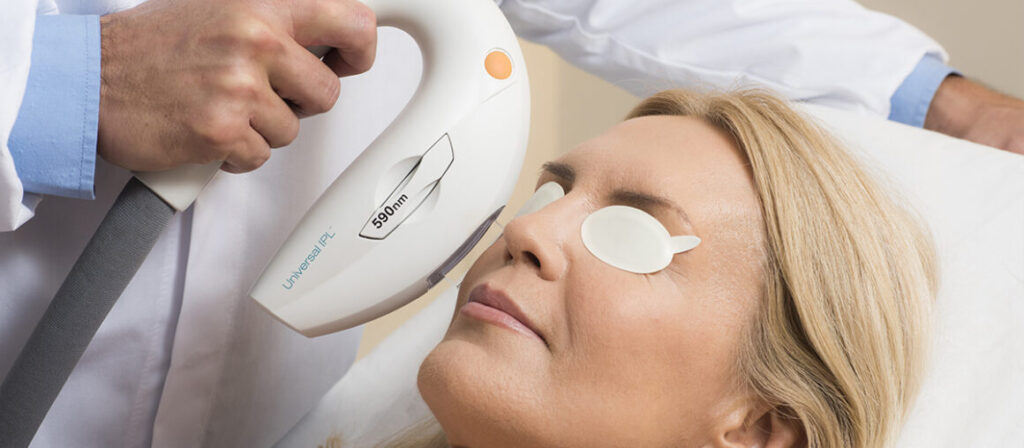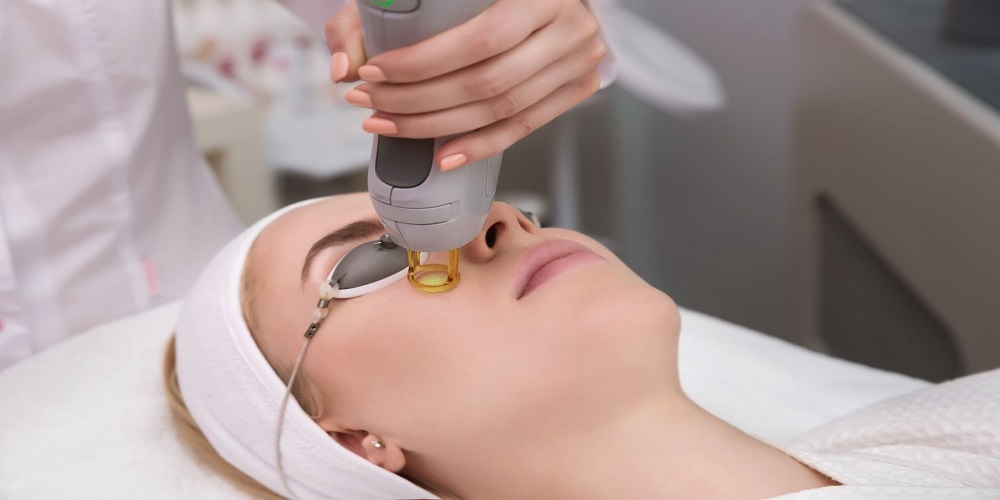Intense Pulsed Light (IPL) therapy has long been used for cosmetic applications in treating skin conditions. IPL treatment for dry eye is now being used as an effective treatment for chronic dry eye, especially for patients suffering from Meibomian Gland Dysfunction (MGD). Moreover, in cases of ocular rosacea, IPL may help reduce erythema and collagen by remodeling collagen, allowing a longer-lasting relief from symptoms. Keep reading to learn all there is to know about IPL treatment for dry eye.
Understanding Dry Eye Disease (DED)
Dry eye disease can happen due to poor tear quality or insufficient production, causing irritation, redness, and discomfort. This condition is usually caused by Meibomian Gland Dysfunction (MGD), where blocked glands disrupt the oily layer of tears, resulting in tears evaporating faster. Other factors that may cause dry eyes are prolonged screen time, environmental factors (low humidity, dry air, wind, pollution, UV exposure, etc), and conditions like rosacea. IPL therapy targets underlying issues like MGD and irritation to provide longer-lasting relief and improve overall eye health.
What is IPL Treatment?
Intense Pulsed Light (IPL) therapy is a noninvasive medical treatment that uses broad-spectrum light to target and treat various skin and ocular conditions. IPL was initially developed for cosmetic applications to address specific skin concerns. However, it is now being repurposed for ophthalmic use in treating conditions like dry eye disease.
Ophthalmologists and optometrists have recognized the potential of IPL to address the root causes of dry eye, making it an effective alternative to traditional treatments like artificial tears and prescription eye drops.
Mechanism of IPL in Treating Dry Eye
Meibomian glands, located in the eyelids, produce an oily secretion that forms part of the tear film, preventing excessive evaporation of the watery component of the tears. The tear film breaks down when these glands become clogged or dysfunctional, leading to dry eye symptoms. The following are the steps of an IPL treatment session:
- Getting ready for IPL: Eye shields are placed over your eyes for safety. This prevents the light pulses from directly contacting your eyes during the procedure.
- Application of a cooling gel: A thin layer of cooling gel is applied to the skin around the eyes. This gel helps to facilitate the light pulses and provides a cooling, relaxing effect during the treatment.
- Start of IPL treatment: After all the preparation, the IPL device administers the pulses of light at the skin around the eyes. This light specifically targets the area around the eyelids where the meibomian glands are located. It penetrates the skin, applying controlled heat to liquefy and dislodge the hardened oils that clog these glands.
- Frequency and duration of the treatment: Each IPL treatment typically lasts 15-20 minutes. Most patients require four treatments spaced about a month apart to ensure the best long-term results. Some patients may require maintenance treatments after all the sessions. This depends on the severity of their dry eye symptoms.
- Post-treatment care: Patients might experience slight redness or warmth around the treated area after each session, which generally resolves within a few hours. Moreover, some patients may require a Lipiflow treatment after the final IPL session. This is to restore the normal oil flow from the meibomian glands.
Throughout this process, IPL therapy addresses multiple causes, such as gland dysfunction, inflammation, and instability in the tear film, all at the same time.
Benefits of IPL Treatment for Dry Eye

Intense Pulsed Light therapy offers various benefits in combating dry eye disease, mainly caused by Meibomian Gland Dysfunction (MGD). Following are some of the key benefits of IPL treatment for dry eye symptoms:
- Improves the Tear Break-Up Time (TBUT) by stabilizing the tear film and preventing evaporation. This results in enhanced ocular surface health and prolonged tear stability.
- Reduces inflammation around the eyes by destroying abnormal blood vessels (telangiectasias) through photothermolysis (using light to create heat to destroy cells). This decreases the levels of pro-inflammatory mediators that contribute to dry eye.
- IPL also reduces the inflammation caused by the Demodex mites on the eyelid margins.
- Enhances the function of the meibomian glands by unblocking and liquifying the thickened oils. This facilitates oil release and improves overall gland function.
- Regular IPL treatments restore normal oil secretion from the glands, which improves tear film quality and reduces dryness.
Overall, IPL treatment improves the patient’s satisfaction and quality of life. Patients report a significant reduction in discomfort, irritation, and redness, along with enhanced visual clarity and tear film stability. Moreover, studies also show that IPL enhances outcomes such as decreased dependence on artificial tears and better overall eye health – as reported by the clients.
Who Can Benefit from IPL Treatment?
IPL treatment has proven effective for many people suffering from chronic dry eye. It is best for:
- People with Meibomian Gland Dysfunction (MGD).
- Chronic dry eye patients.
- People who face persistent irritation, redness, and discomfort that does not improve with traditional treatments such as lubricating drops, warm compresses, or lid hygiene.
IPL is a great solution for many people with chronic dry eye disease and MGD. However, it is essential to consult with an eye care expert to ensure it is the right treatment for you based on your specific symptoms and overall eye health.
Side Effects of IPL Treatment for Dry Eye
IPL treatment for dry eye is generally safe. However, it may have some side effects. Although most of the side effects of IPL therapy are mild and temporary, it is still important to be aware of what to expect during the process. Below are some potential side effects that you might experience during the recovery process of IPL therapy:
- Discomfort: Mild discomfort, such as a feeling of heat or irritation, is common during and after the treatment.
- Erythema (redness): Redness around the treated area is a common side effect that usually resolves within a few hours.
- Slight eye inflammation: mild swelling of the eyes and eyelids may occur in sensitive individuals. It typically fades after a short period.
- Tingling sensations: Tingling or a sensation of tightness around the eyes may be felt during the healing process.
- Mild mucus discharge: Some people might notice a mild increase in mucus discharge after the treatment. This happens as the glands in the eyelids begin to work more effectively.
- Light sensitivity: Temporary sensitivity to light may occur after IPL, which generally resolves within a few hours to a day.
- Darker skin tones: Dark-skinned individuals may be at risk for temporary pigmentation changes such as dark spots or hyperpigmentation.
Conclusion
Intense Pulsed Light (IPL) therapy is an incredible breakthrough for people suffering from persistent dry eye issues that don’t respond to traditional treatments. IPL treatment provides long-term success in treating chronic dry eye if used regularly, helping to improve tear quality and reduce discomfort.
To minimize the side effects and ensure the best results, it is crucial to have an experienced optometrist perform your IPL therapy. If you are looking for a reliable IPL treatment for dry eye in Raleigh, See More Eye Clinic is the best place to go. The expert eye care specialists cater to all your concerns and issues and provide the highest quality dry eye treatment in Raleigh.

